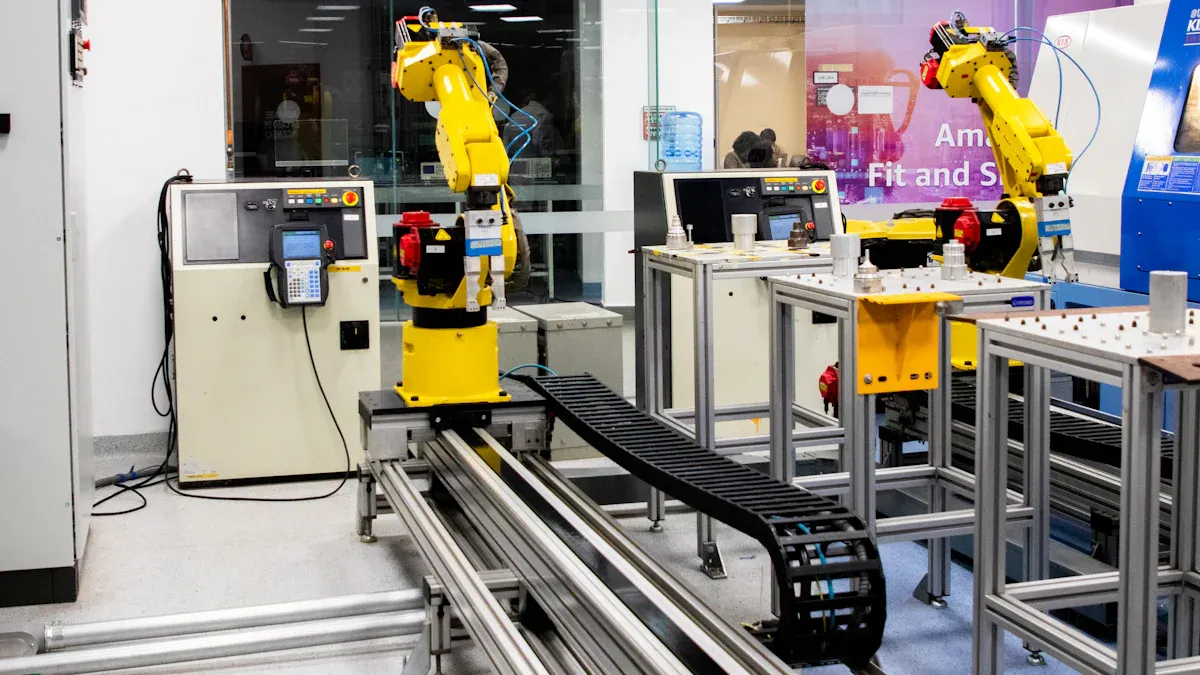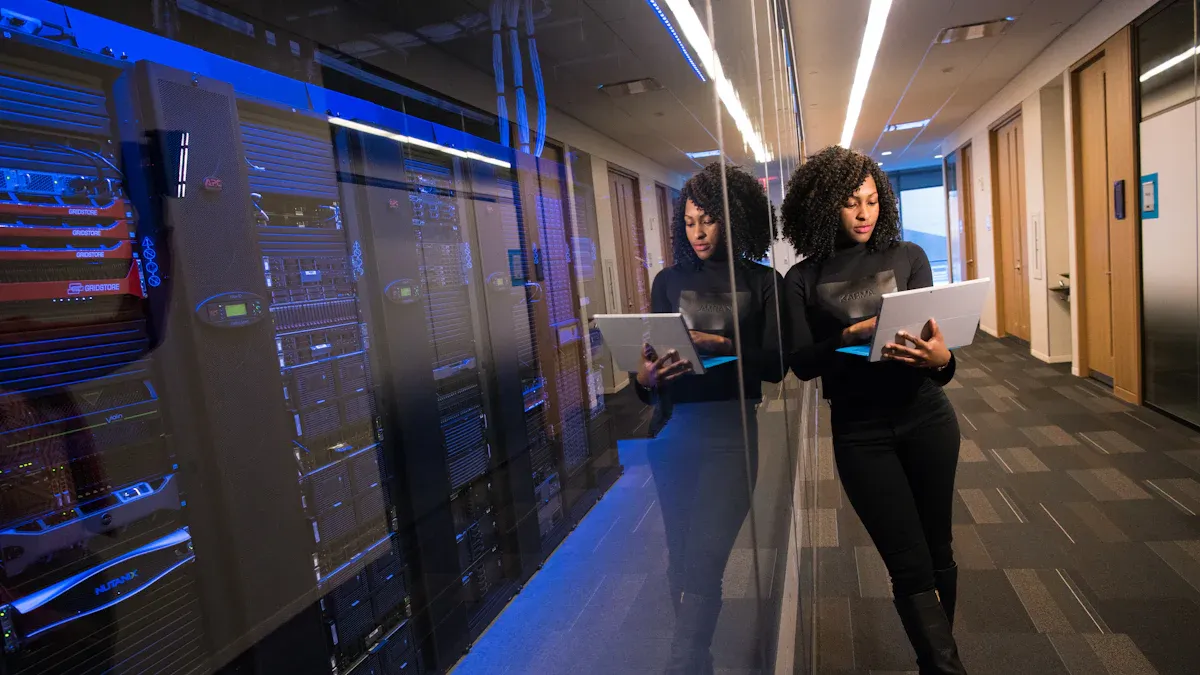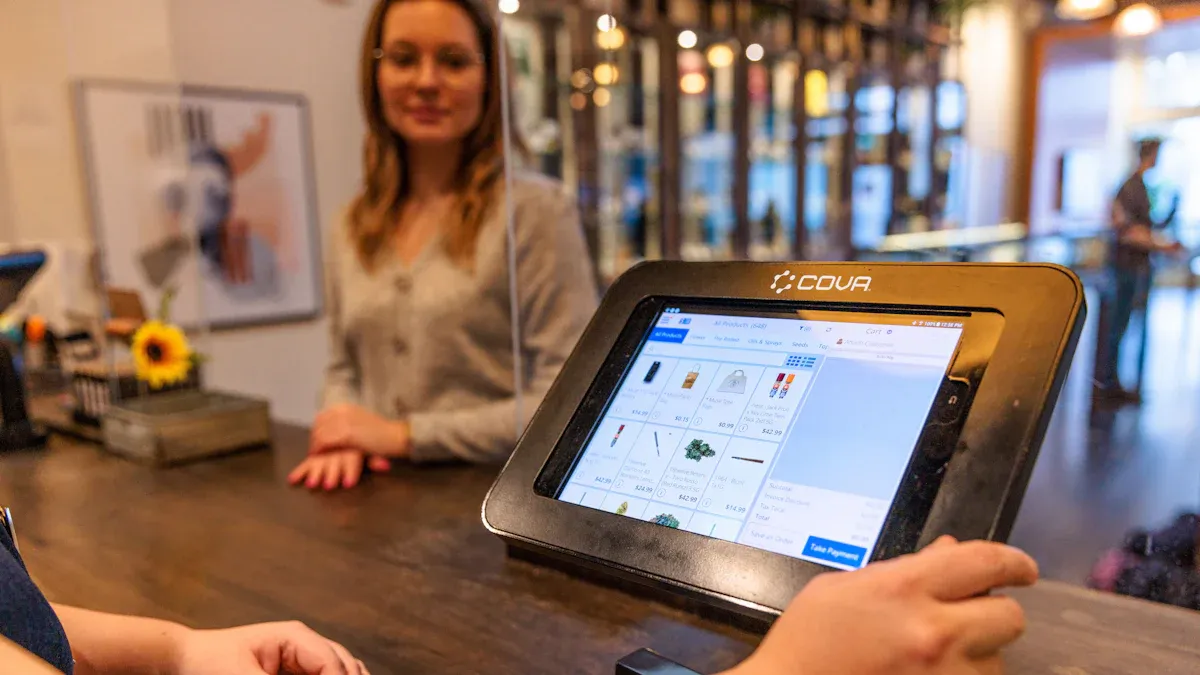How Cloud AI Is Automating Retail Workflows for Greater Efficiency

Cloud ai platforms are important for retail digital transformation. They help stores guess future needs better. They help stores keep track of products. They help stores talk to customers faster. Retail digital transformation gives better results. Stores can guess future needs 10% better. Stores can lower inventory costs by 15%. Retail digital transformation helps workers do more. It also makes customers happier.
Key Takeaways
Cloud AI helps stores manage inventory automatically. This reduces waste and lowers costs by up to 15%. Stores can keep the right amount of products.
Personalized shopping makes customers happier. Stores use AI to suggest products. Sales can go up by 25%. Shopping becomes more fun for customers.
Using cloud AI needs clear steps. Stores should look for good chances. They should write down their processes. They must set goals to get better results. This helps stores switch easily.
Cloud AI Platforms in Retail Workflows

Inventory and Supply Chain Automation
Cloud ai platforms help stores automate inventory and supply chain work. These tools let stores see products in real time. Computer vision scans shelves and finds missing items. Stores know what needs restocking. AI forecasting guesses sales for each store and product. This helps stores order the right amount and avoid waste.
Stores have many supply chain problems. Delays and bad choices can mean lost sales and unhappy shoppers. AI makes decisions faster and more correct. Stores use cloud ai platforms to keep enough stock and stop delays.
Feature | Description |
|---|---|
Shows store conditions, so products are placed well and available. | |
Automated shelf scanning | Uses computer vision to spot empty shelves and rule problems. |
Demand forecasting | AI guesses sales for each item and store, then refills automatically. |
Supply chain intelligence | Gives full view with AI for work schedules and delivery planning. |
Stores have seen big changes. A coffee shop cut inventory by 15% and wasted less. Walmart had 16% fewer empty shelves and turned over inventory 10% faster. AI watches trends and changes inventory rules to lower risks. Cloud ai platforms help make supply chains better. They boost work speed, lower costs, and help stores react fast to problems. Stores use these tools for making schedules, moving inventory, and planning deliveries.
Cloud ai platforms help stores be greener. They match stock to demand and waste less. These tools track pollution and give tips for better earth-friendly actions. Stores use cloud ai platforms to lower carbon and make supply chains clearer.
Customer Engagement and Personalization
Cloud ai platforms change how stores talk to shoppers. They study customer data from many places. They look at what people buy, what they search for, and what they say. Stores use this to suggest products people might like.
Machine learning finds patterns in how people shop. Stores use collaborative filtering to suggest items. This makes shopping feel special and helps stores sell more. Stores have seen great results. Sephora’s Virtual Artist made people look at products 50% more and buy 20% more. WNS Analytics helped a store get four times more customer interest. SuperAGI’s platform raised sales by 25%.
Case Study | Customer Engagement Improvement | Sales Increase |
|---|---|---|
WNS Analytics for a retail chain | N/A | |
Sephora’s Virtual Artist | 50% increase in product views | 20% increase in sales |
SuperAGI's journey orchestration platform | N/A | 25% increase in sales |
Stores use cloud ai platforms to give personal experiences everywhere. These tools bring customer data together and automate talking to shoppers. Stores can give special suggestions and change prices. Shoppers who use many ways to shop are worth 30% more than those who use one. Eight out of ten shoppers buy more when stores make things personal.
Cloud ai platforms also make customer service better. Stores use chatbots and smart tools to answer questions fast. This makes shoppers happier and keeps them coming back.
Real-Time Pricing and Promotions
Cloud ai platforms help stores set prices and run deals right away. They study inventory and demand data. Stores use this to change prices and deals fast. If stock is low, AI stops discounts so items don’t run out. If there is too much stock, AI lowers prices to sell more.
Metric | Impact |
|---|---|
Increase in average order value | Up to 13% during busy sales |
Increase in conversion rates | 5% for repeat buyers |
Potential increase in turnover | Up to 3% |
Potential improvement in profit margins | Up to 10% |
Stores use smart guessing to control sales and waste less. AI forecasting lets stores change inventory and prices quickly using data. Companies like Target use AI to guess sales and change inventory for weather and local needs.
Cloud ai platforms help stores check results. They track payback time, automation, work gains, and money saved. IBM got payback in 10 months and 120% return each year after using AI for bills. Cisco cut costs by 30% and worked 25% faster in nine months.
Stores must think about safety when using cloud ai platforms. These tools keep private data safe and stop risky actions. Stores use rules to block data leaks and follow laws.
Cloud ai platforms help stores change by automating work, making customers happier, and letting stores make quick choices. Stores that use these tools get faster, more correct, and better results.
Driving Retail Digital Transformation with AI

Predictive Analytics and Decision Support
Retailers use predictive analytics to guess what customers will buy. AI transformation helps stores look at old sales, market trends, and how people shop. This makes their guesses more correct and helps them plan better. Stores can change prices and deals quickly. They can stop running out of products and avoid having too much. This saves money on storage and cuts down on waste.
Predictive analytics checks old sales and market changes.
Stores use live data to change prices and deals.
Better guessing means stores don’t run out of products.
Stores avoid having too much and waste less.
AI-powered retail solutions help stores keep track of products and work faster.
Retailers see big changes from digital transformation. They use guessing to match what they have with what people want. This helps customers and makes stores work better. Stores using digital tools can react fast when things change.
Integration with Retail Systems
Stores need cloud AI platforms to work with their old systems. Digital transformation connects ERP and POS systems for better data. Stores match accounting, products, and shipping for easier management. Cloud AI platforms use APIs to link systems and automate work. This helps stores grow and find new ways to do business.
Many stores still use old systems. Over 60% use old tech for important jobs. These systems slow down change and make it hard to grow. Stores pay a lot to keep old systems working. Old systems can be unsafe and don’t work well with new tech. Stores must fix these problems to change successfully.
Stores using AI-powered retail solutions make work easier and handle lots of data. They make smarter choices and find new ways to grow. Connecting ERP and POS systems helps stores try new ideas and stay ahead.
Edge AI for Enhanced Experiences
Edge AI brings digital transformation right into stores. Stores use edge computing to handle data nearby and help customers faster. This makes shopping better and helps stores keep track of products in real time. Stores keep customer data safe by handling it on-site. Edge AI means stores don’t need the internet all the time and can save money.
Benefit | Description |
|---|---|
Faster data processing and decision-making | Edge AI lets stores help customers faster and makes shopping better. |
Enhanced data security and privacy | Handling data in stores keeps customer info safe. |
Reduced reliance on internet connectivity | Edge AI lets stores work even if the internet is slow. |
Lower long-term costs | Stores save money by sending and storing less data. |
Stores like Sam’s Club use easy exit tech to cut wait times. Walmart uses smart shelves to stop running out of products. Amazon uses edge computing for Dash Carts and quick checkout. These tools help stores make shopping better and earn more money. Edge AI helps stores keep track of products and react fast to what customers want.
Edge computing handles data in stores, giving quick answers and helping stores make fast choices. This helps stores meet customer needs and keep products in stock.
Generative AI helps stores give personal shopping tips and find products. Stores use AI to make short reviews and answer questions. Customers get special suggestions and quick help from chatbots. Stores see more people shopping and happier customers. Customers share info with generative AI to find products they like.
Evidence | Description |
|---|---|
AI-generated summaries of product reviews | Customers like these summaries because they save time and make choices easier. |
Expert answers to product questions | Customers want detailed answers, so stores need to give personal help. |
Product comparison tools | These tools help stores keep customers interested and coming back. |
Stores use AI-driven supply chains and digital tools to guess what customers want and make shopping better. Digital transformation helps stores give personal service and stay ahead in retail.
Practical Steps for Implementation and Change Management
Stores must follow clear steps to use cloud AI for automating work. These steps help stores change successfully.
Opportunity assessment: Stores look at their work to find what to automate.
Process documentation: They write down how things work now and set goals.
Technology evaluation: Stores compare tools to see what fits best.
Pilot selection: They pick a job that will show big results first.
Success metrics: Stores set goals to check if things work.
Change management is important for digital transformation. Stores help workers get used to new ways. They build trust by talking clearly and letting workers join in. Stores focus on changing how people work to fix skill gaps and worries. A clear plan helps stores reach their goals with AI.
Evidence | Description |
|---|---|
Addressing Human Factors | Stores need a plan to help workers use AI for success. |
Employee Engagement | AI works best when workers help with the change. |
Building Trust | Talking openly helps workers feel safe about AI. |
Roadmap for Implementation | A clear plan helps stores get good results with AI. |
Stores that follow these steps and help workers do better. Digital transformation helps stores guess what customers want, make shopping better, and work faster. Stores that use AI lead the way in retail.
Cloud AI platforms help stores change by making work easier and faster. Stores use AI for chatbots to answer questions. They use AI to suggest products people might like. AI helps stores keep track of products. Stores watch how things get better by setting clear goals. They use KPIs to measure success. Special platforms can change fast when new trends appear. Stores should look at how they work now. They should start using AI tools. Stores need to keep checking how well things are going.
FAQ
How does cloud AI help stores save money?
Cloud AI helps stores spend less money. It does this by automating jobs. Stores use AI to keep track of products. They waste less and guess sales better.
Tip: Stores can watch how much they save. They do this by checking product amounts and sales numbers.
Can cloud AI improve customer service?
Cloud AI makes customer service better. Stores use chatbots and smart tools. Shoppers get fast answers and special help. Customers feel happier and come back more often.
Is cloud AI safe for store data?
Stores use cloud AI platforms with strong safety. These tools keep customer info safe and follow privacy rules. Stores check their systems often to protect data.
See Also
Revolutionizing Online Store Management With AI-Driven Tools
The Future of Retail Lies in AI-Enhanced Stores
Essential Insights for Retailers on AI-Driven Corner Stores
Enhancing Store Convenience With Cloudpick's Cashierless Solutions
Boosting Efficiency and Experience With Cloudpick's Checkout Technology
